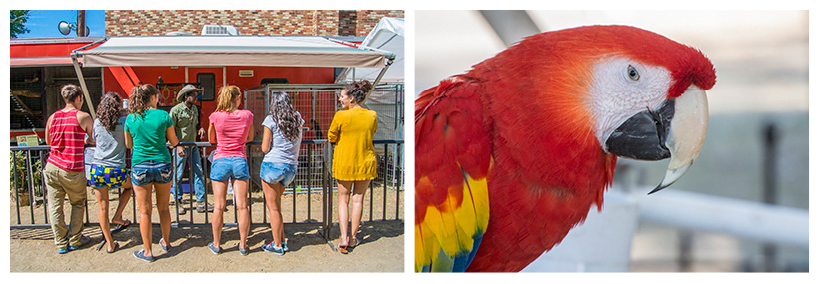
Late summer is an interesting time in rural America. It's the time of County Fairs. While the tradition of an agricultural fair goes back to Biblical and Roman times, they have become almost an anomaly for most of our U.S. population, because most of our population has moved to an urban or suburban environment where nobody participates in agriculture beyond raising a pet or tending a garden. Familiarity with live goats, cows, pigs, or chickens is literally non-existent. But, outside our big urban areas, agriculture is alive and well. And so is the tradition of a county fair. For those who may not know, a county fair is a gathering of people for the purpose of showing prized live-stock in competition. Those live-stock competitions are often complemented by produce competitions, craft competitions, canning and baking competitions, cook-offs, rodeos, tractor pulls, horse races, and even pig wrestling and cow-plop tosses. Well into evenings there are also musical performances, food stalls, picnic areas, bingo games, fire-works, and a colorful midway featuring carnival attractions and rides. Occasionally, there are even traveling zoos or menageries, like the one pictured above, featuring exotic non-farm animals. The entire event, lasting usually only a few days, is meant as a time of sharing and good natured fun for all members of the community, young and old, right before the back-breaking work of harvest is to begin. We have very few things similar to it happening in urban areas. Art and music festivals may be the closest. But urban art and music festivals are usually meant to showcase a city or neighborhood, and its talent, for the purpose of attracting outsiders and their money. Whereas, county fairs are meant more as a gathering and sharing with each other of people within a community, as a means of reaffirming and strengthening the bonds of community. Outsiders aren't discouraged from attending county fairs, but they are seldom full participants in the same ways that insiders are. It's interesting to note that people often attend fairs in groups. And one might very well ask why? Groups of older people attend together. Groups of younger people attend together. Families with small children attend with other families who have small children. People who farm cows gather together. People who farm pigs gather together. People who farm chickens gather together. And people who participate in tractor pulls gather together. They will all meander about visiting all the attractions, but they will all do so in groups. Group upon group upon group. Only outsiders can be seen in unattached pairs or single families struggling to stay together. But why? Why is that? There may or may not be sociological literature on the topic, but my guess is that the people for whom the fair is intended, members of the community, sort themselves into stratified groups because they are intent on absorbing the wonder and new knowledge on exhibit. They don't want to miss anything relevant or worth learning. They point things out to each other, discuss it, relate it to what they already know, joke about it, and each participant adds it to their personal wealth of shared wisdom. Common knowledge, common values, and common purposes are the basis upon which rural communities are built. In mechanical terms, such practice gives redundancy and flexibility to the structure of the community. No neighbor is at a disadvantage to their fellows, knowledge-wise. And each is capable of stepping in to help the other, if needed. Luck and circumstance are the only things that differentiate their individual fortunes. They are all equal in most other respects. Attending the fair in stratified groups helps establish that equality. There would also seem to be a downside to the practice of establishing and strengthening shared wisdom at a county fair in groups. For one, fairs only come around once a year. And, they often fail, in many ways, to incorporate or demonstrate the latest best knowledge available across the globe on a variety of relevant farming, human, and environmental issues. Residents accustomed to acquiring new knowledge in this traditional manner, or reinforcing their old knowledge, may also be resistant to acquiring new knowledge via other methods, say for instance via a political speech by their elected President or over so called "liberal media". Still, there is much to be learned and enjoyed at a county fair. I hope you will never take a pass on opportunity to attend or participate in one. |
• Posted: Sep 22, 2013 12:51:48
• Comments Welcome
• Vote CoolPhotoblogs
• Purchase a Print
• Share
Wednesday, July 24th, 2013 Holland MI USA |